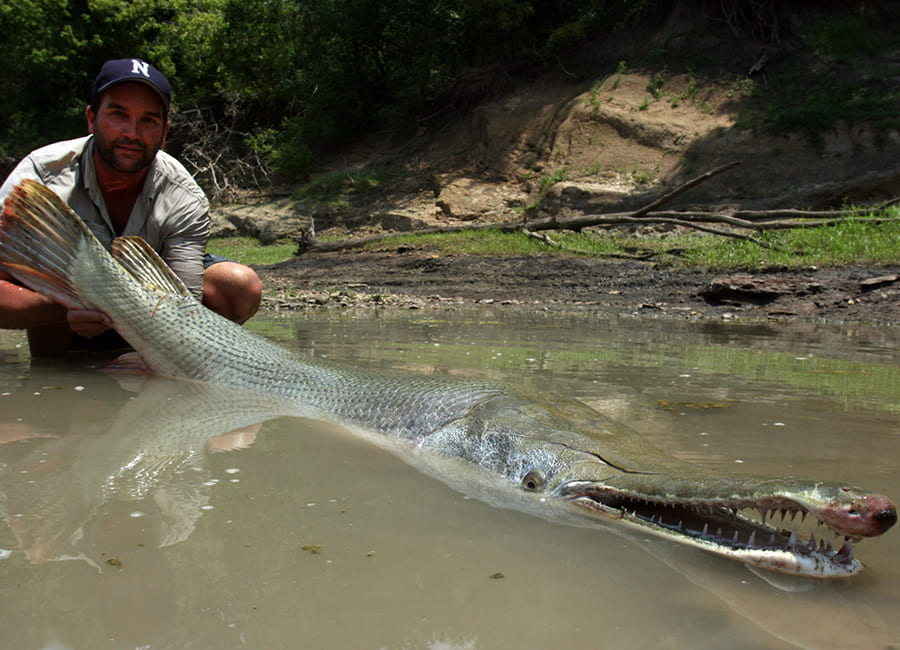Zeb Hogan studies big fish – megafish that are at least six feet long and weigh 200 pounds. His quest to find, study, and protect the megafish has landed the University of Nevada, Reno researcher on National Geographic Channel’s fish-focused “Hooked” television series.
The star of the show “Hooked: Monster Fish of Thailand,” which airs Monday, July 6 at 10 p.m., is a giant sting-ray, perhaps the biggest freshwater fish in the world, found last February in Thailand.
Hogan, along with his team of researchers and anglers on site at the time of capture, estimated the fish’s weight to be between 550-770 pounds.
“I was surprised when I found out that there are still healthy populations of stingray in Thailand,” he said. “I was amazed by the size and do think that it could be a contender for the world's largest fish.” Hogan is worried that this rare species is at risk from threats like pollution and overfishing.
“Even though the giant freshwater stingray is a huge aquatic predator capable of inflicting a deadly wound, it's really our actions that threaten the stingray and other megafish species, not the other way around” he said. “Seventy percent of megafish are endangered...and they need our help for survival.”
Hogan, who is also a National Geographic Explorer and Conservation Biologist, will be featured on a second show, “Hooked: Monster Fish of Mongolia” on Monday, July 13 in which he and a team of scientists, anglers and local Mongolians track down the elusive Hucho taimen, a trout-like fish that can grow to six feet long and eats muskrats, squirrels, mice and ducks.
Hogan goes to the ends of the earth on his quest to locate and help protect monster fish that are in peril of extinction.
His work with the University’s Department of Natural Resources and Environmental Science has taken him to dozens of locations around the world. About half of all megafish are in Asia, but Hogan's project also includes those in Australia, the Middle East, Europe and North and South America, including the Mekong River in southeastern Asia, the Mississippi River, the Nile in East Africa and the Amazon in South America.
Determining which species are on the brink of extinction is the primary goal of Hogan's five-year study. He said dams, pollution and overfishing are the biggest threats to freshwater megafish.
The Megafishes Project is generating a plethora of publicity through the television show and the National Geographic Web site. Several shows featuring Hogan and megafish have previously aired on the National Geographic Channel the past few years.
Hogan is scheduled to be a guest July 8 on Nevada Newsmakers.
“The publicity is good if it highlights some of the valuable work that comes out of the University,” Hogan said. “I am proud to be associated with the university and so obviously I'd like to promote the work done here. I'm also happy if the publicity raises the profile of freshwater biodiversity conservation, since freshwater biodiversity is highly threatened yet the issue does not receive very much attention.”
For more about Hogan and the megafish project, visit the College of Agriculture, Biotechnology, and Natural Resources.















